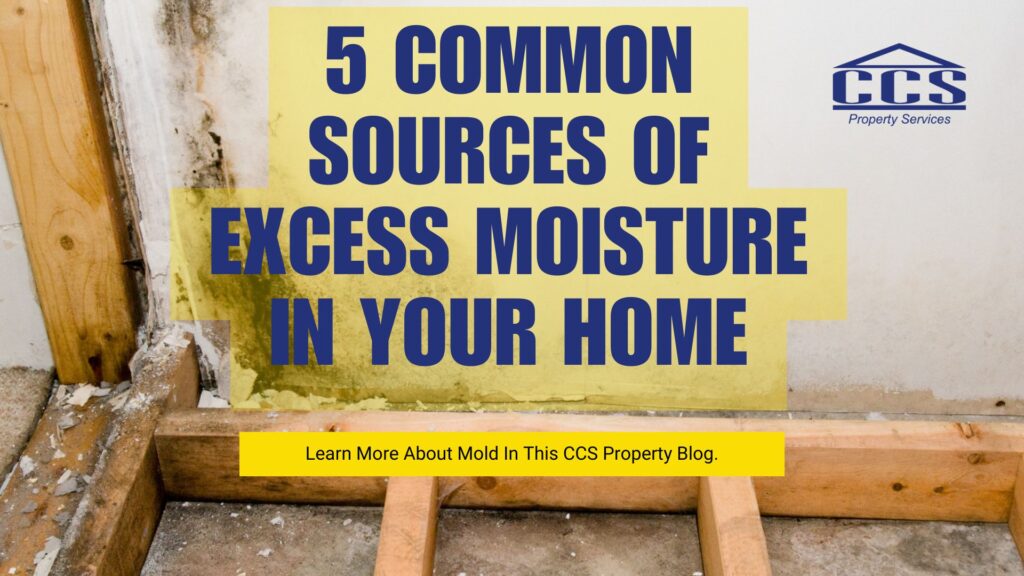
Moisture inside your home can cause serious issues, especially when it leads to mold growth. While a little moisture may seem harmless, excessive indoor humidity can trigger hidden mold colonies that compromise your air quality, damage your property, and pose health risks.
Whether it’s due to weather patterns, home appliances, or poor ventilation, recognizing the signs of moisture buildup is the first step in preventing mold damage. Here are five common sources of excess moisture in the home—and what you can do to reduce the risk.
1. High Indoor Humidity Levels
Humidity is one of the leading causes of indoor mold. When indoor humidity levels exceed 60%, your home becomes the perfect environment for mold spores to thrive. This is especially common in warmer, more humid climates or during summer months.
Prevention Tips:
-
Use a dehumidifier to maintain optimal humidity levels (ideally between 30%–50%).
-
Increase airflow by using fans or keeping windows open on dry days.
-
Run bathroom and kitchen exhaust fans when cooking or showering.
2. Summer Conditions & Air Conditioning
Summer moisture issues often arise from fluctuating temperatures inside the home, especially when windows are closed and the A/C is running constantly. The cool air inside and hot, humid air outside can cause condensation on windows, walls, and ductwork.
Prevention Tips:
-
Ensure your air conditioner is properly sized and regularly maintained.
-
Check for condensation around windows and cooling ducts.
-
Avoid setting the thermostat too low during high-humidity days.
3. Poor Attic Ventilation
Inadequate attic ventilation is a hidden but serious source of indoor moisture. Without proper airflow, heat and humidity can build up in the attic and seep into your home’s ceiling, causing mold in insulation, drywall, and structural wood.
Prevention Tips:
-
Make sure your ridge and soffit vents are clear and functioning.
-
Install a powered attic ventilator if passive ventilation is insufficient.
-
Check your attic regularly for musty smells, moisture, or visible mold.
4. Appliance Leaks and Water Line Issues
Appliances like refrigerators, freezers, dishwashers, and washing machines can be sneaky sources of moisture. A leaking water supply line or malfunctioning ice maker can introduce moisture that seeps behind cabinetry or under flooring—creating the perfect conditions for mold.
Prevention Tips:
-
Inspect water lines and appliances regularly for leaks.
-
Keep appliance drip pans clean and dry.
-
Ensure proper ventilation in laundry and utility rooms.
5. Cracks in Foundation, Walls, or Around Windows
Structural issues such as cracks in the foundation, gaps around windows and doors, or poor insulation can allow moisture to seep into your home. These problems often go unnoticed until mold begins to grow behind the walls.
Prevention Tips:
-
Seal foundation cracks and window gaps with the right caulking or sealant.
-
Inspect your home’s exterior for water entry points, especially after heavy rain.
-
Make sure your gutters and downspouts are directing water away from the foundation.
Other Common Moisture Triggers
While these are some of the most frequent culprits, other sources of indoor moisture include:
-
Leaky pipes behind walls
-
Poorly sealed toilets or tubs
-
Cracked siding or roofing materials
-
Crawl spaces without vapor barriers
Being proactive about home maintenance and moisture control can dramatically reduce your risk of mold. Remember, a dry home is a healthy home—and your family’s health is worth protecting.
Concerned About Mold in Your Home?
If you see or smell mold, don’t wait. Contact CCS Property Services at 920.435.2288 to schedule a FREE mold assessment. One of our certified mold technicians will inspect your home, identify problem areas, and guide you through your next steps.
For more mold prevention tips, visit our Mold FAQ page.